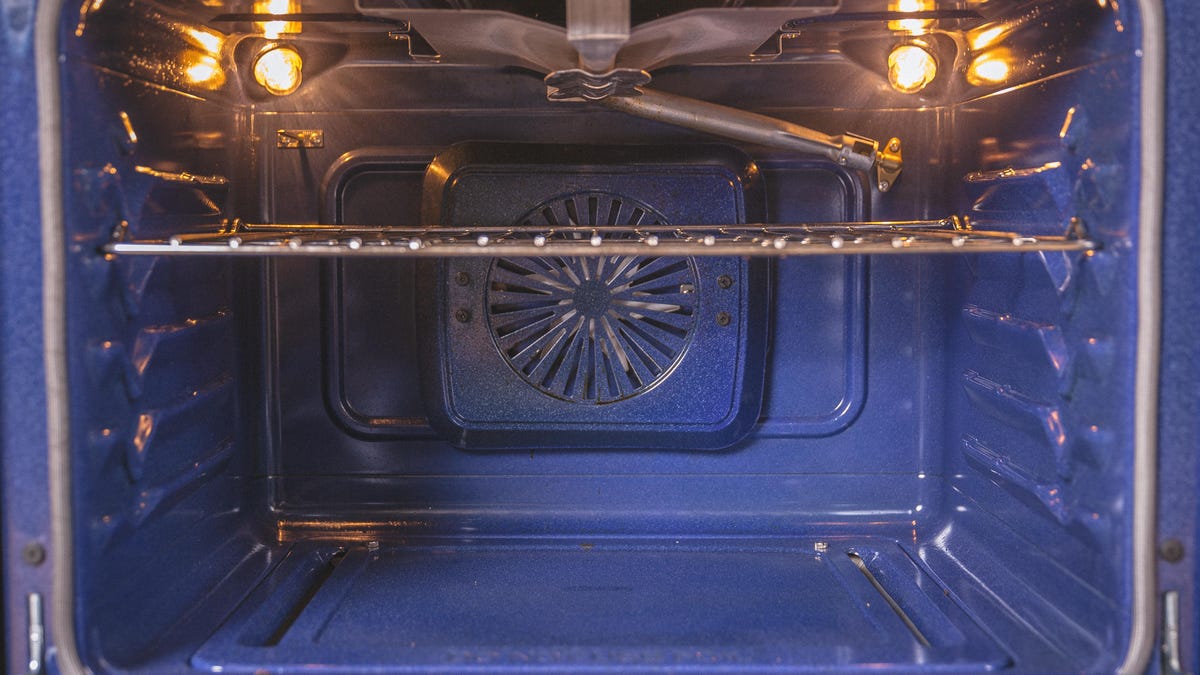Everything you need to know about convection ovens
Here's why the next oven you buy should be convection.

Want to step up their cooking game? Consider a convection oven. Convection ovens are hotter and cook faster than conventional ovens . They also cook more evenly thanks to some simple additions to the appliance. All of this adds up to yummier baked goods, meats and more. Here's how convection ovens work and how they compare to their more basic oven relatives.
Convection ovens vs. conventional ovens
In a conventional oven, heat rises to the top. This makes items on the top rack cook faster than the items on the bottom rack. If, for example, you're cooking dozens of muffins for a bake sale and want to use every rack available, then you'll run into some problems. When the muffins on the top rack are perfectly cooked, the ones on the bottom rack will still be underdone.
Read: The best toaster oven is the one you'll hate the least
A convection oven has a fan inside the cooking area that circulates the hot air sort of like an air fryer. Because the air doesn't just stay at the top, everything cooks more evenly.
While this may sound simple, it makes a big difference. The tops of your pies won't overcook while the bottom stays soggy. Roast chicken is evenly browned. Even better, you can be sure that items on the bottom rack will cook in the same amount of time as those on the top rack.
Here's how a radiant oven works vs. how a convection oven works.
Conventional ovens typically are 25 to 30 degrees cooler than a convection oven set to the same temperature. Since most recipes are intended for conventional ovens, you'll need to adjust the temperature to around 25 degrees F (about 15 degrees C) lower to accommodate the difference.
Also, even with the temperature adjustment, you'll find that convection ovens cook 25 percent faster than conventional ovens, especially if the food is a large item, like a turkey. You will need to reduce the cooking time, or at least keep an eye on your food.
A faster cooking time is good, though. Meats are less likely to dry out in speedy convection ovens. Pastries are also crispier because the extra heat steams the fat in the dough quickly, making flaky layers.
Because of its efficiency, convection ovens use about 20 percent less energy per year than radiant ovens, according to the US Department of Energy. See this article for more on the science of convection ovens.
What not to bake in a convection oven
Not everything is compatible with a convection oven's fan. Delicate baked goods, like souffles, custards, angel food cake and even many quick breads aren't suitable for convection. The air flow can cause cakes to rise unevenly, the tops of cupcakes to lean towards one side and dry out the top of custard, creating a crust that you don't want.
Use convection for roasting meat and vegetables, baking cookies and pies, and anytime you want even browning.
Buying a convection oven
There are many types of convection ovens on the market. The most common is a conventional oven with a built-in fan, allowing you to turn the convection setting on and off.
The best ones have an additional heating element by the fan, which makes the air moving around the oven a consistent temperature. A consistent temperature means the oven will cook more evenly than models with just a fan. To find ones with the extra heating element, look for terms like "third-element convection," "true convection" or "European convection" when you're shopping around.
If you want a gas range with a convection oven, look for dual-fuel options. Gas ovens don't offer convection options without the ability to switch over to electric.
Also, the bigger, the better. Bigger insides allow the air to circulate more freely. This is why full-size ovens cook more evenly than smaller countertop versions.
We can help you choose with some in-depth analysis. Take a look at our stove and oven top picks for 2018.

